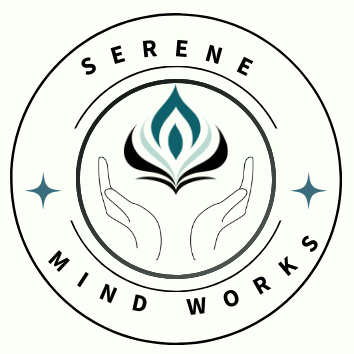Mindful living isn’t really about chasing some impossible idea of constant calm or perfect wellness. It’s all about bringing a sense of awareness, intention, and presence into the ordinary stuff we do every day. For a lot of people, figuring out what “mindful living” really means can feel a bit vague at first. The good news? Anyone can weave mindfulness into their day, even with a packed schedule or a busy mind. In this guide, I’ll share the core principles, relatable tips, and hands-on ways to bring mindful living into daily life, without it feeling like another item to check off your list.

What Does Mindful Living Actually Mean?
At its most basic, mindful living is about paying attention, on purpose, to your thoughts, feelings, and surroundings instead of letting autopilot take over. It means tuning into the present, whether you’re eating breakfast, driving to work, or talking to a friend. This can sound a little abstract, but it has roots in ancient meditation and has been checked out by modern science for its stress-busting benefits.
In practice, mindfulness asks us to tune into our senses, notice our inner dialogue, and catch ourselves when we get lost in distractions. Instead of reacting automatically or judging every moment, mindful living encourages curiosity and kindness toward yourself and others. Studies have linked mindful habits to lower stress, sharper focus, and better relationships. It’s not magic, but it’s pretty powerful over time.
Mindful living doesn’t require hours of meditation or drastic changes. Tiny, practical tweaks can make a difference. Whether you’re folding laundry or making your morning coffee, bringing more attention to the moment gives everyday experiences a boost; you might notice details, textures, or feelings you usually miss.
Mindful Living Principles to Guide Your Routine
The basics of mindful living aren’t hard to remember, and you don’t need to be a meditation pro. Some popular principles you’ll hear about most often include:
- Intentional Awareness: Choose to notice what’s happening instead of letting life pass in a blur. Whether you’re enjoying a sunny day or powering through a challenging task, pressing pause even for a moment can help you engage more fully.
- Nonjudgment: Try to notice what’s going on without instantly labeling things as good or bad. Letting go of judgment lowers the pressure and lets you see things as they really are, rather than how you think they should be.
- Acceptance: Let experiences unfold without fighting them. This isn’t the same as giving up—it just means recognizing how things are before deciding the next move.
- Curiosity: Bring a gentle interest to your thoughts, emotions, and the world around you. Curiosity can lighten things up, turning rough patches into moments of learning instead of frustration.
- Compassion: Treat yourself and others with a soft touch, especially when stress, regret, or confusion shows up. Mistakes and messy emotions happen; kindness helps you move on.
Getting familiar with these ideas gives you a toolkit for adding more mindful habits, even when some days go off track or feel especially hectic.
Quick Ways to Bring Mindfulness Into Your Day
Building mindful living habits is not about being perfect. It’s about small changes and regular check-ins. Here are a few ways I work mindfulness into my day-to-day, along with tips you might find useful:
- Start With Breath Awareness: Take ten seconds to notice your breath when you wake up, before reading emails, or while waiting in line. It’s a quick way to slow down and come back to what’s right in front of you.
- Practicing Mindful Eating: During at least one meal or snack, notice the colors, textures, and flavors on your plate. This takes almost no extra time and can turn eating into something truly enjoyable instead of just another thing to cross off the list.
- Tune Into Body Sensations: Check in with your body—are your shoulders tight, jaw clenched, or feet cold? Noticing these cues gives you a chance to relax and avoid tensing up.
- Walking Mindfully: Whenever you move from one spot to another, pay attention to the feeling of your feet touching the ground or the rhythm of your steps. Even a quick walk to the mailbox can be a mini-break for your brain.
- Use Mindfulness Reminders: Set sticky notes, phone alerts, or let everyday actions (like filling your water bottle) act as cues to pause, take a mindful breath, or check in with your emotions.
These micropractices fit even into the busiest days. Over time, they remind you that life isn’t just about rushing around. There’s a lot to notice, savor, and appreciate in every moment if you slow down just a little.
Common Challenges and How to Deal With Them
False ideas about mindfulness can make starting harder than it needs to be. Here are some common hurdles and friendly workarounds, drawn from real-life experience:
- Feeling Like You’re “Bad” at Mindfulness: All minds wander—distraction is normal. When your attention drifts, just bring it back, and skip the criticism. That is the practice!
- Time Pressure: You don’t need an hour-long routine. Even one mindful breath counts. Try tacking mindfulness onto things you already do, rather than creating a pile of extra tasks.
- Lack of Motivation: Some days, you just don’t feel it. That’s okay. On low-energy days, try “mindful resting”: lie down, close your eyes, and spend two minutes just noticing sensations and sounds.
- Impatience for Results: Mindfulness brings gradual changes, not instant transformations. Look for small wins, such as less overreacting, sleeping a little better, or handling tricky situations with a cooler head.
Dealing With Distraction
Distraction can feel overwhelming, especially in a world packed with notifications and noise. I find it helpful to set regular “quiet times”—putting my phone on “do not disturb,” even for fifteen minutes. When distraction shows up, just acknowledge it and gently return your focus. Your attention span will grow with practice.
Handling Restlessness or Boredom
Mindfulness sometimes feels slow or boring, particularly if you’re used to constant activity or multitasking. When this happens, take a minute to name the feeling—”I feel restless today.” Notice what comes up, and see what happens if you don’t rush to change it. Boredom becomes something you can watch, rather than something to avoid.
Building a More Mindful Life: Real-Life Examples
Mindful living clicks when it pops up in everyday situations. Here are some common scenarios where mindfulness really helps:
- Managing Stress at Work: After reading a tense email, pause. Notice your breath or place a hand on your chest for a few deep inhales before you answer. These pauses break stress-driven habits.
- Enjoying Family Time: Put your phone aside during dinner or activities with your family. Listen, laugh, and share the moment. Being all there makes your connections richer.
- Handling Frustration: The next time you get stuck in traffic or in a long line, notice your grip on the steering wheel or the sounds around you. Even in tense spots, mindfulness offers a way to pause and reset.
- Choosing How You Use Technology: Take a second to ask yourself before scrolling through social media: “Is this making me feel better or worse?” Bringing this tiny bit of intention can help you make choices that actually serve you.
You don’t need a fancy practice—just these simple, real-life moments can transform how you feel in your daily adventure.
Handy Mindful Living Tools and Practices
A lot of people stick better with mindfulness if there’s a framework that meshes with their lifestyle. Here are a few friendly starter strategies and tools I recommend for those getting into the swing of things:
- Guided Meditations: Apps and web resources like Insight Timer and Calm give you short, approachable audios that walk you through the basics. No pressure, just gentle guidance.
- Mindful Journaling: Two minutes. Write down what you’re feeling or noticing. Journaling like this helps trace progress and work through tough spots.
- Nature Breaks: Get outside for five minutes, or even open a window and tune into the sights and sounds around you. Nature helps ground your attention, and research shows even brief moments outdoors give a quick mental boost.
- Gratitude Habits: Jot down three things you appreciate each day. This small ritual can tip your mood toward appreciation and balance out stress, especially on rough days.
Mix and match practices, find what feels right, and don’t stress about getting it “right.” Just check out different approaches and see what naturally fits your daily rhythm.
Mindful Living: Frequently Asked Questions
Here are answers to some of the most common curiosities people tend to bring up when first checking out mindful living:
Question: Can mindfulness help with anxiety or a , low mood?
Answer: Mindfulness isn’t a replacement for medical care, but it can help manage stress, worrying, and anxious thoughts. A lot of people notice it helps spot thought patterns and gives some space to respond more calmly.
Question: Do I have to meditate every day to benefit from mindfulness?
Answer: Nope! Even quick pauses during the day, focusing on your breath or being present while washing hands, count as mindfulness practice.
Question: How will I know if mindfulness is “working”?
Answer: Watch for small changes, like feeling less frazzled, reacting calmly to annoyances, or sleeping a little easier. Mindful living is about gradual, steady shifts—so count the little wins along the way.
Working Mindfulness Into Everyday Life
Bringing mindfulness into your days takes curiosity and consistent action. You’ll slip up and have distracted moments—totally normal. The important thing is to keep coming back to your intention, whether it’s savoring lunch, really listening to someone, or just pausing for a breather.
Over time, these tiny choices really add up. You’ll enjoy more moments, manage stress better, and feel more in touch with what makes life meaningful. Mindful living isn’t about perfection; it’s just about being more present, showing yourself (and others) some compassion, and carving out a pocket of calm whenever you need it most.
